Wang’s 2025 World Cup just wrapped. In the semifinals, he lost to Hugo Calderano, 10-12 in the deciding seventh game. When the last ball dropped, Wang Chuqin squatted down and wiped the sweat off his face with his arm. Then he smiled. Regret thickened the air like humidity before a storm. The crowd felt it. For Wang, alone at the center, it had to be a thousand times heavier. But still, he smiled.

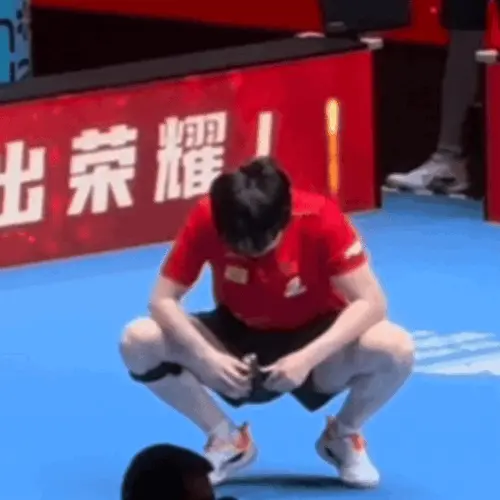
This wasn’t his first World Cup. Last year, in the same city the same stage, he was knocked out by Ma Long in the semifinal.1 Back then, Wang was riding high after being selected for the Paris Olympics, but that confidence didn’t carry him far. This year, Wang walked in with fresh titles from the Asian Cup and WTT Chongqing Champions. He should’ve been on fire. But things didn’t click from the start.
Group Stage: Not So Simple
The playing format and that cursed seamless ball messed things up early. Wang advanced from the group stage but didn’t breeze through it as expected. In this round-robin system, each match was limited to four games instead of the usual best-of-five, with possible outcomes of 4-0, 3-1, or 2-2. Standings were based on game and point ratios. Many pros, including Germany’s head coach Jorg Rosskopf, voiced their doubts about the system.
His first opponent, 17-year-old Aditya Sareen, dragged the first two games to 12-10. Every game mattered, and pressure sat heavily. Then came Tomislav Pucar, who had beaten Wang six years ago. This time, Wang handled him with sharper attack-defense transitions and better control. But the real problem wasn’t the opponents. It was the ball.
Yeah, the seamless ball made a comeback.
It’s lighter, low-spin, and full of chaos. Just like it did at the Asian Championships last October, use only 70% of your usual power, and the ball might fly farther than it should. Use 120%, and the spin still won’t land as heavily. The whole balance gets thrown off. Moreover, it creates a mess of lucky points, far more than usual. For strong forehand attackers like Wang Chuqin, it’s harder to find that sweet spot of power and control. Meanwhile, players who rely on quick, punchy backhands get a big boost.
Watching the matches dragged me right back to that same frustration. Many pros have voiced frustration about this. Romanian veteran Elizabeta Samara criticized the Ownwin seamless ball as having “zero spin.” Dang Qiu also admitted, “Where a ball was that I never used before, it was impossible for me (to prepare).“
Floaty, low-spin balls. Off-beat rhythms. Random deflections. Countless lucky points. It all piled up, and unfortunately, Wang got caught in it again. He commented, “This seamless ball differs from the ones we used before. They varied a bit in spin, speed, or other aspects in the past, but this one feels off in every way. It’s a complete shift. Honestly, I’ve never really gotten used to it. I’m just taking it one match at a time and seeing how far I can go.”
He clearly struggled more and for longer than most top players and couldn’t shake it off, even by the end. (Read my post about the ball’s impacts: How Seamless Balls Broke the Game’s Rhythm)
He wasn’t alone. Top names like Felix Lebrun, Patrick Franziska, Lin Gaoyuan, Dang Qiu, Jang Woojin, and Lin Yun-Ju got knocked out early. Victims of both the ball and the unique playing system.
Knockouts: From R16 to the Edge
Looking back at all his matches, there’s another detail worth noticing: none of Wang Chuqin’s opponents were recent or frequent matchups. That lack of familiarity played a part. From the round of 16 against Kanak Jha, Wang looked hesitant on serves and returns. His usual aggressive style didn’t come out clean, probably from that ball messing with his feel. Jha wasn’t strong enough to push it further, but that inner struggle in Wang was already written all over the game.
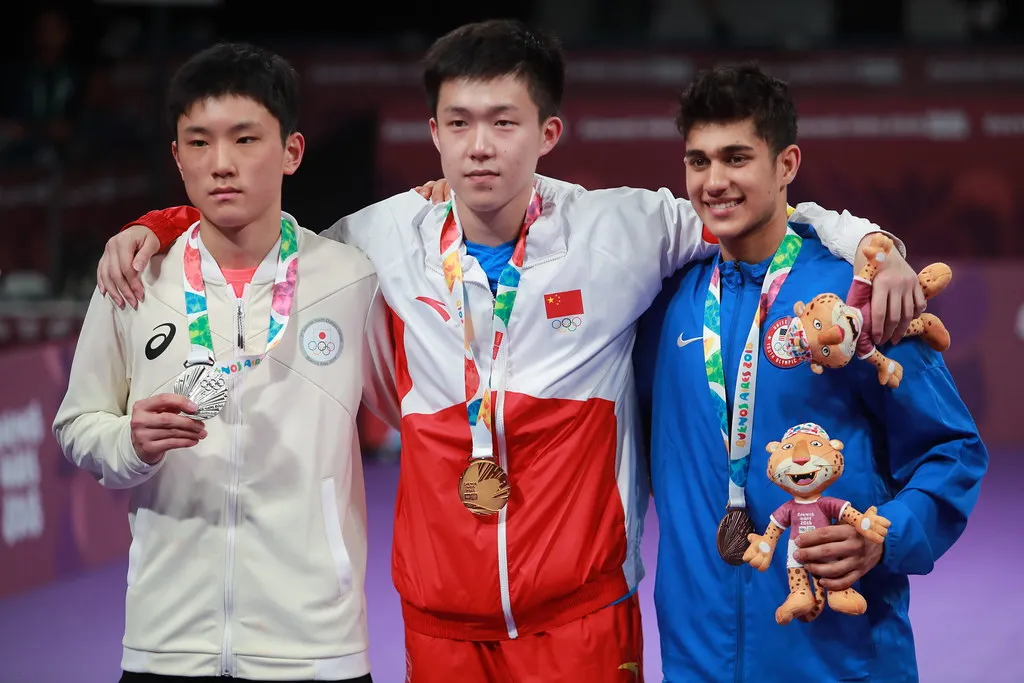
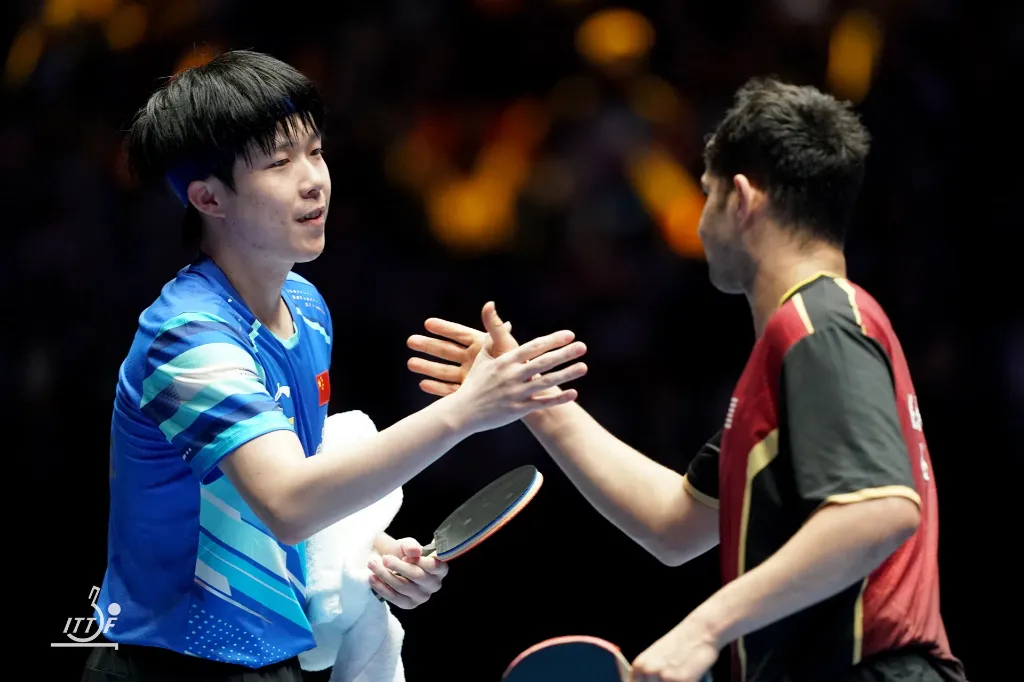
Carrying that discomfort, Wang ran into Benedikt Duda in the quarterfinal. Duda, ranked 17th in the world, is strong, experienced, and well-rounded. Both left-handers delivered what I’d say was the best match of the entire World Cup. After splitting the first six games, Duda reached match point at 10-9 in the decider, standing on the verge of the biggest win of his career.2 With over 10,000 supporters roaring in the arena, and all the pressure was on Team China, Wang surprised everyone by going for a bold, long serve.
“No one thought I’d dare go for it,” Wang later said. “It was the last point. If you can crush my long serve, then fine, you can have it. If I lose, so be it. Just go with whatever comes to mind. Don’t leave any regrets behind.”
He went for it, and it worked. The “amazing serve,” praised by Yosuke Kurashima, former head coach of Japan’s men’s team, caught Duda off guard. He failed to return it, and Wang saved the match point. Wang then reeled off three straight points to win the game 12-10.
Coach Jorg Rosskopf commented that Duda was rarely used to fighting through so many tough rallies, but still kept defending Wang’s lightning-fast attacks with incredible form. In the end, though, Wang’s “long, slightly underspin serve in world-class style” was simply too strong to stop. Rosskopf added that he would review the match carefully to take away what he could.
The mental warfare, tactics, counterattacks, rhythm swings… I didn’t know much about Duda before, but I walked away with genuine respect for him after that match. (Check the video for that match point stretch, featuring commentary in different languages, especially the French crew from RMC Sport, who bring a lot of passion and fun. Oh là là! 🤣🤣)
Then came the semifinal. Wang Chuqin vs. Hugo Calderano. In game one, Wang misfired with short backhand plays. In game two, he switched to short forehand shots, mixed in some long pushes, and even targeted the middle. It gave Calderano real trouble and set the tone for the next three games. Wang built up a 3-1 lead. Victory felt just one step away.
Then game five started, and everything flipped. For reasons we couldn’t figure out, Wang abandoned the effective tactics. He seemed a bit abstracted, defaulting to long backhand shots aimed at Calderano’s middle zone, even after they repeatedly failed. Even a timeout from Coach Wang Hao didn’t pull him back onto the safe track. Calderano picked up on the pattern, pushed back hard with varied placements, and started stacking points. A crazy number of lucky balls helped. Bit by bit, Calderano dragged Wang into his tempo and took control of the match.
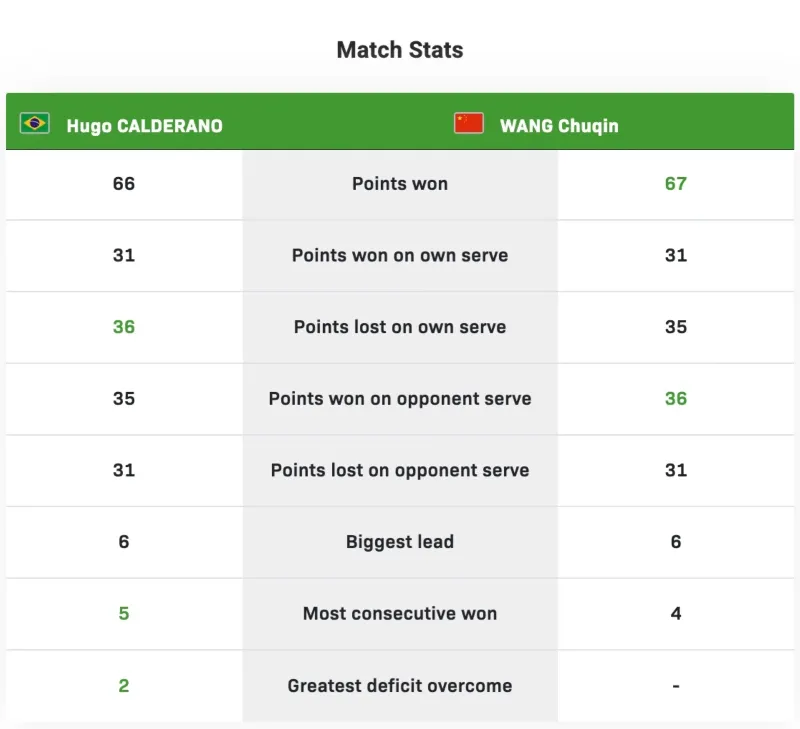
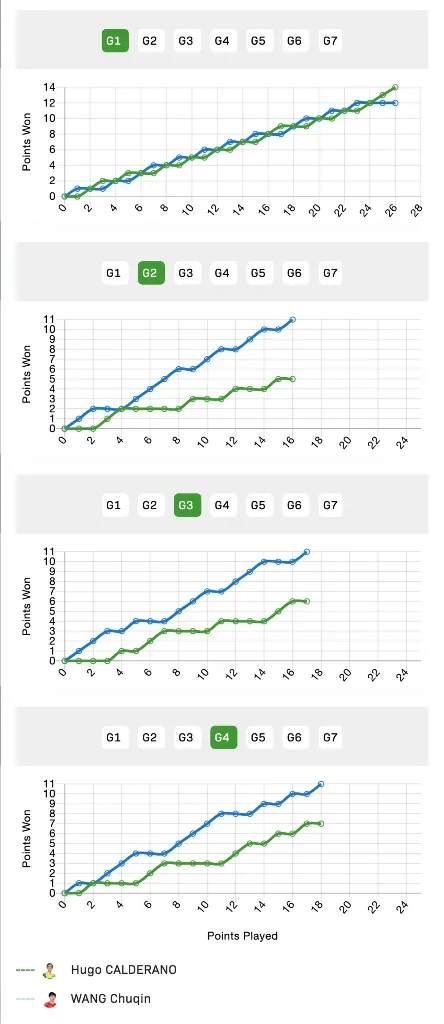
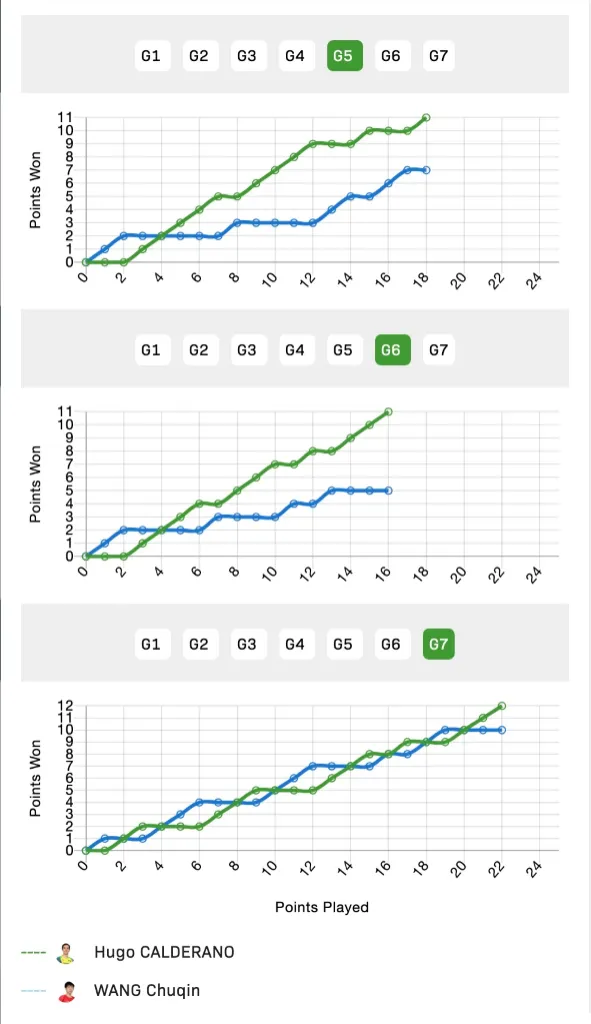
In the final game, Wang attempted to reset and regain control, but Calderano was ready. He read the shots, blocked Wang’s strong smashes with ease, and played with total confidence. Wang looked rushed, like he knew the window was closing fast.
We all know how it goes in moments like this. Sometimes, it comes down to one thought, one breath, and whether you can stay calm and steady. Who can hold their breath a little longer? This time, Wang didn’t hold long enough.
And that was it.
That’s the brutal reality of a major tournament.
Calderano then won his first World Cup singles title, making history as the first Pan-American world champion in table tennis. He later called the semifinal against Wang the most challenging and memorable match of his run.
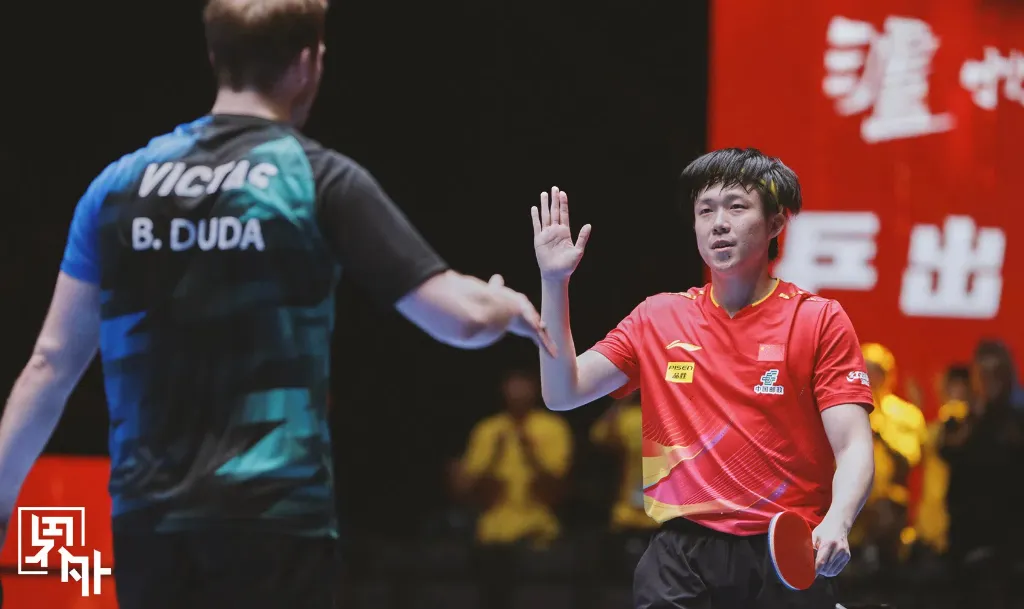
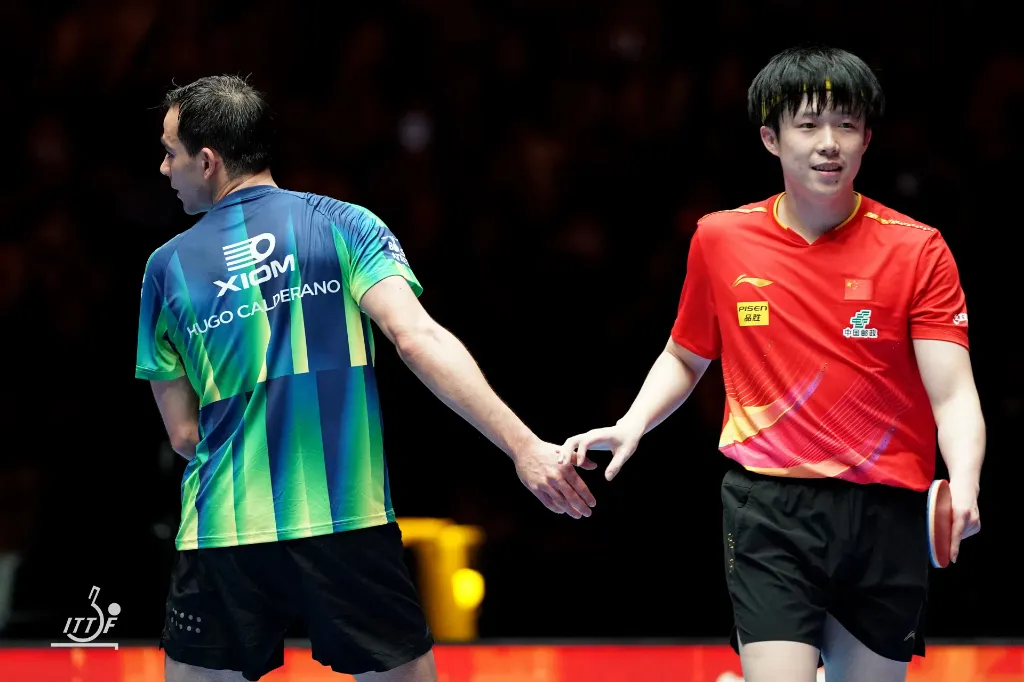
In the Silence Between Points
Wang Chuqin always says that wins and losses are just part of the game, and no one is born to win every time. But pressure is a different beast. Public expectations stack match by match. In my opinion, how you carry that weight might matter more than the score.
The matches showed some of the same issues we’ve seen before. Wang still struggles longer than most top players to adapt to unfamiliar conditions, especially when the equipment changes. He sometimes lacks patience in long rallies and rushes to reset to the third-ball attack. That’s his comfort zone, his signature, sure. But when it doesn’t work, what then? Where’s Plan B?
This isn’t just about technique. It goes deeper into how Wang Chuqin was raised in the biased system. He’s a left-handed player trained in a setup designed around right-handed doubles play. That “attack, then pass” rhythm, the habits of a support player, still linger even in singles. Ten years of that training etches patterns into your game like old scars. I hate to bring this up again, but the truth keeps appearing in real matches.
By the way, Wang still doesn’t have an official supervising coach. His coaching and training situation has been in limbo for a while now, as we’ve discussed before. The mixed doubles coach, Xiao Zhan, was spotted with him in the training hall in Macao after months of absence, which was unusual since he rarely attends singles-only events. That led the public to think he might be back on Wang’s side.
But honestly, I don’t trust Xiao anymore after Paris. His priority is clearly the mixed doubles squad, not Wang’s individual growth. His training methods are harsh, excessive, and outdated, and they’ve already taken a toll on Wang’s physical and mental health. Before the round of 16 this time, Wang was seen rubbing his arm again. It was the first time he looked that uncomfortable in months, and yeah, those were the months Xiao wasn’t around. 😑
Back to the tournament.
That said, it wasn’t just the ball that did him in. What really cost him was maybe underestimating how brutal this tournament would be. At this level, everyone’s studying you and aiming straight for your head. You can’t lose focus. Can’t give away a single easy point. No one will hand one back.
If you want it, you’d better go all in and gamble with fate. When you’re on the court and you’ve got chips in your hands, don’t wait for it to ripen and fall. Grab it before anyone else can. That’s what it takes.
Growth doesn’t move in straight lines. It spirals. Just like people. Just like dynasties.
After the Paris Olympics, honestly, I don’t care too much about medals. What stays with me is every choice Wang makes at each point, every moment he stands firm and sends out a shot with intent. The journey is built on those moments, ball after ball, match after match. Win or lose, or win.
The fire in each shot says, “I’m here.”
One day, we’ll all look back and say it was worth the trip.
Read More
How Seamless Balls Broke the Game’s Rhythm
Wang Chuqin and the Mystery of China’s Coaching System Neglect
2025 WTTC Doha: Calm After the Climb 👑
References
Leave a Reply